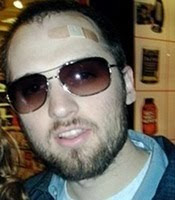Director James Whale’s film version of Frankenstein no longer scares audiences, but retains its power today for four main reasons. The first is Boris Karloff, and the second is the outstanding makeup. The alchemy between those two elements brought the character to life on-screen, just as it does in the story. The third reason is the visionary art direction. The misty graveyard where Frankenstein collects his raw materials; the dungeon laboratory where he conducts his experiments; and the hilltop windmill where master confronts his creation – these three locations are not just settings for the story, but the story itself. The fourth, and most important, component is Mary Shelley’s powerful work of science fiction, on which the film is based. Frankenstein’s monster might be the grandfather of all movie zombies: the slow-moving, groaning, cold, gray, decaying embodiment of our own mortality.
Saturday, August 21, 2010
Frankenstein (1931, James Whale)
Director James Whale’s film version of Frankenstein no longer scares audiences, but retains its power today for four main reasons. The first is Boris Karloff, and the second is the outstanding makeup. The alchemy between those two elements brought the character to life on-screen, just as it does in the story. The third reason is the visionary art direction. The misty graveyard where Frankenstein collects his raw materials; the dungeon laboratory where he conducts his experiments; and the hilltop windmill where master confronts his creation – these three locations are not just settings for the story, but the story itself. The fourth, and most important, component is Mary Shelley’s powerful work of science fiction, on which the film is based. Frankenstein’s monster might be the grandfather of all movie zombies: the slow-moving, groaning, cold, gray, decaying embodiment of our own mortality.
Labels:
1931 Frankenstein
Subscribe to:
Post Comments (Atom)



No comments:
Post a Comment